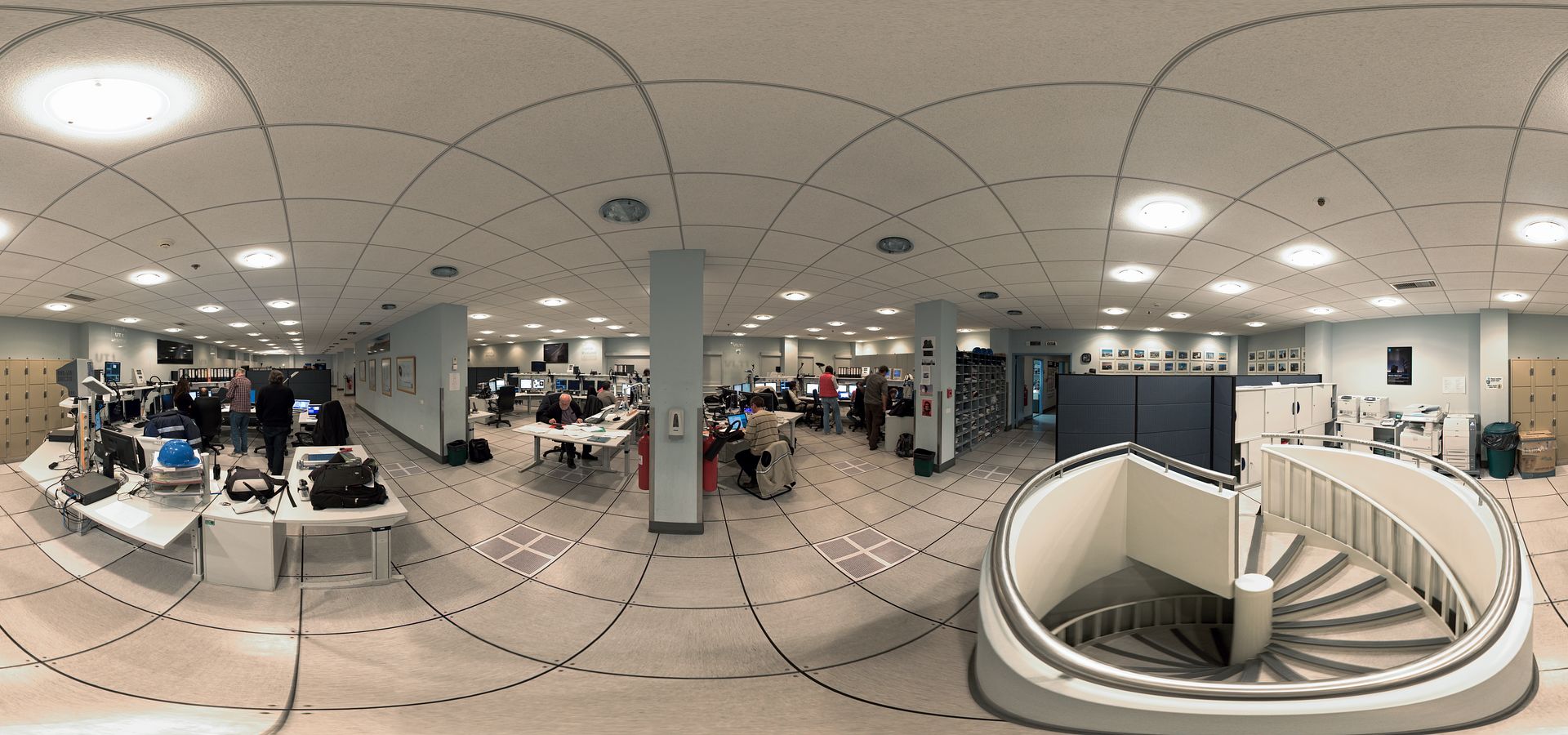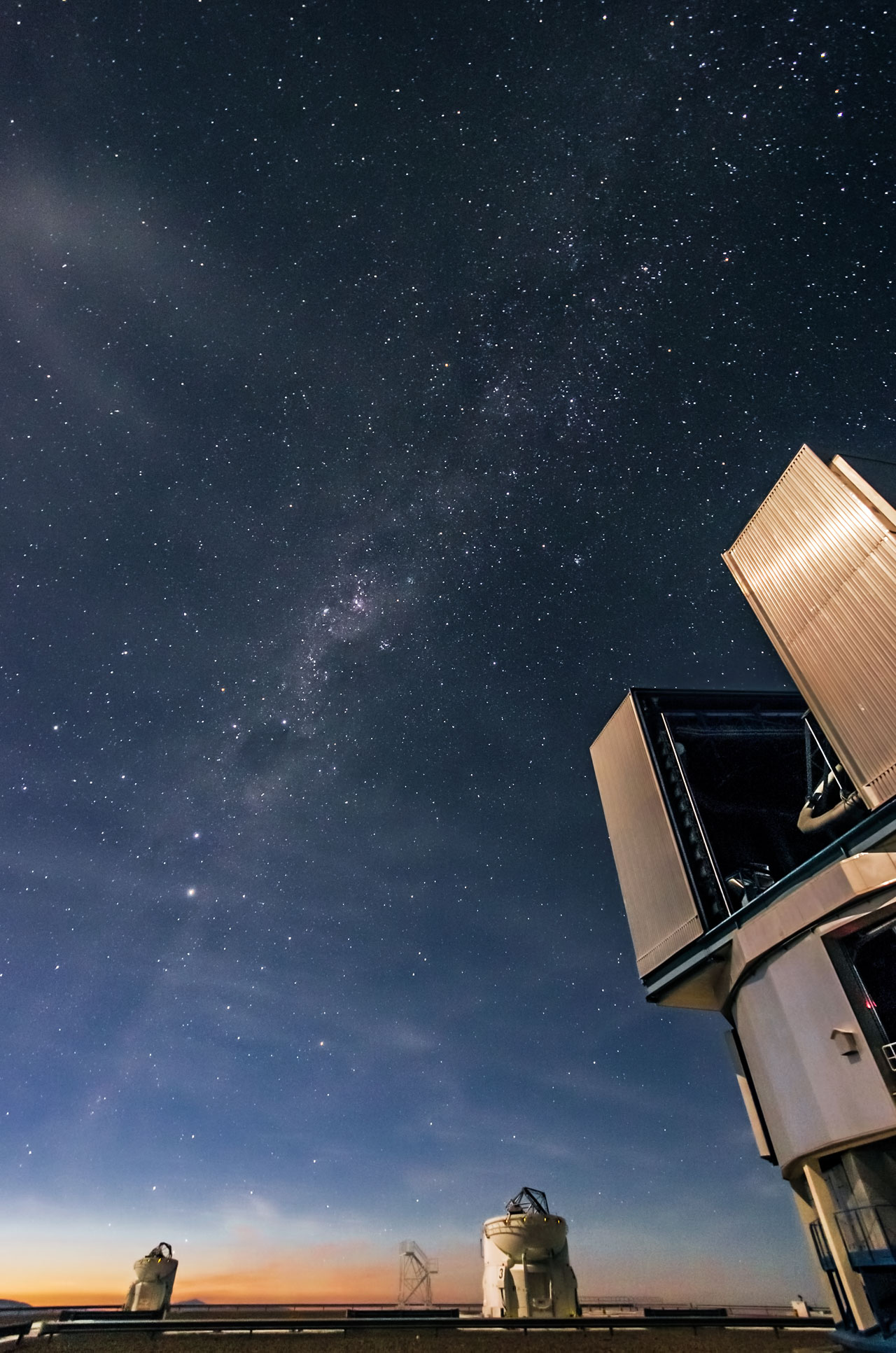
A spotlight on Claudia Cid
A telescope operator on fixing banana stars, searching for lasers and enjoying Paranal sunrises
- What operating an ESO telescope involves on a daily basis
- How telescope operators decide what to observe using the telescopes
- Some of the challenges involved in operating telescopes
Q. What does your day to day work look like?
A. Well, it’s night to night work actually! On any given night, I operate one of the telescopes at Paranal Observatory to make sure that we get the best possible scientific data given the meteorological conditions at that time, whilst ensuring that people and telescopes remain safe. Recently, for example, I’ve been working with the Very Large Telescope (VLT) UT4, Yepun, which means I’ve been handling the lasers!
What my role actually involves is typically working with an astronomer for the first half of the night and alone for the second half of the night. Everything is computerised, so we sit down in front of lots of screens in the control room and start up the telescope remotely. We have a bank of observing programmes submitted by astronomers around the world, and we use a tool to select which programme we should observe depending on the current conditions — we account for wind, turbulence in the air, cloud cover, humidity, etc. When astronomers submit a programme they provide information about what conditions their observations require.
Once a programme has been selected, the telescope moves to point at the right coordinates on the sky. When a telescope has pointed to a new object, the object tends to look out of focus like a banana or a donut, so I adjust the telescope’s mirror until the object is in focus. Then the telescope starts tracking the sky and I constantly monitor all the systems; this includes the enclosure, the hydraulics, the electronics and the light that’s coming in.
At this point, if the astronomer is present they take care of operating the instrument that detects the light collected by the telescope. We keep an eye on the data to check its quality; if it’s not good enough, the observations have to be repeated with better conditions. I work on different programmes like this, moving from one target to another, until the Sun begins to rise, at which point I put the telescope in a parking position, with the mirror looking up, close the dome and make sure everything is left in a safe state.
Q You were on the team in charge of collecting the last photons from the VLT before science operations were paused for the first time in Paranal's history. How did this feel?
A. Being on the mountain for the last shift before the observatory was closed down due to the coronavirus outbreak was scary and exciting. Before leaving home, we didn't know what would happen and then on the mountain we were witnessing the number of people reducing everyday. But being responsible for operating UT4 during that last shift was a real life challenge — operating under reduced conditions and having no backup on the mountain in case things went wrong made for a very satisfying shift. The control room was so empty but the group pulled it off; I have to thank my remote astronomer for his help, as well as the rest of the "last photons" team.
Q. What do you enjoy most about your job when the telescopes are operating as normal?
A. The mornings! After I close up the telescope system, the Sun is starting to come up over the horizon, the air is cold, the mountains look beautiful, I feel satisfaction about having got my job done, and I know it’s time to go to bed.
I also like that every night is different. Although we use the same telescopes and instruments, we could be looking at comets, star clusters, distant galaxies, or something else entirely.
Q. Do you find night shifts tough?
A. I did exclusively night shifts for 15 years! I’m definitely not a morning person. As an operator I always work one week of long shifts — sleeping at the Residencia during the on-shift week — then one week off the mountain at home, and I don’t get up early when I’m off to maintain the shifted schedule. I don’t feel ashamed about this at all!
Q. You’ve worked at ESO for 17 years; how have you seen operations at Paranal change during that time?
A. I’ve seen many changes, many instruments have been commissioned, and many have been decommissioned. My work is of course “easier” now than it was 17 years ago because we have many more tools to help us operate the telescopes and instruments. These allow us to better understand what we’re observing, the problems we’re facing, and whether the science we’re collecting is good or bad. I didn’t study astronomy, so that was actually something tricky for me when I first joined ESO.
I’ve always worked in the control room, but in the beginning operators were just telescope operators. Now we have tools to better understand the science as it comes in, so we also operate instruments without an astronomer present.
Q. And having worked at ESO for so long, what inspires you to continue going to work every day?
A. To put it simply, I like the job! I always go to work happy because I find it fun and I feel like I can make a difference. This year I’m spending a lot of time training new operators, as well as training astronomers to do operations. It feels great when they trust my knowledge and experience. Besides, I think you have to be kind of special to do this job. It involves working alone a lot, so you have to be comfortable with your own company.
Q. What are the biggest challenges that you’ve faced, and how have you overcome them?
A. Oh, we often face minor technical problems but rarely anything out of the ordinary. For example, UT4 (Yepun) uses Laser Guide Stars. These help us reduce the turbulent effect of Earth’s atmosphere on the light we receive. It takes a lot of experience to perform observations with the aid of lasers, so it takes longer than usual to propagate their light, ensure they are correctly aligned and centred in our laser cameras and then operate them when observing a science target. But some things happen automatically, for example if an aircraft is detected nearby the lasers turn off immediately for safety reasons. A dedicated tool also allows us to see where other telescopes are pointing to make sure the lasers don’t interfere with our observations.
Challenges are always overcome by just paying attention and not getting distracted so that we don’t make mistakes. If mistakes are carried into the science, this could lead to poor quality scientific data, meaning we’d have to retake the data and therefore lose precious and expensive telescope time.
The number one rule is to always know where the telescope is pointing. If I get up to grab a coffee or stretch my legs, I always check what the telescope is doing and how much remaining time there is on the current target. You always have to be aware of what’s going on.
Q. How did you get to where you are today? What inspired you to become an operator?
A. We joke about the Telescope Instrument Operators wanting to be operators, because (although I love the job) nobody really grows up dreaming of being an operator! I actually stumbled across an advertisement for the job in a newspaper around the time I was graduating from university. I felt like they were talking to me with the list of experience and skills that the job required. I have a degree in engineering and feel that my personality is very well-suited to this job.
So I applied but I actually didn’t make it! I was the second choice candidate and I was told that a new operator position might open in the next few months, and if so, I’d get a call. Well, no call came so I became an electronics teacher. A year later, the call came! Now that I am training others to operate telescopes I feel like I am combining my two loves — operations and teaching others.
Q. And finally, what do you do when you’re not operating telescopes?
A. I let myself be pampered! I’m a family person, so during my weeks at home, I often visit my sister and generally enjoy spending relaxed time with my family without worrying that I’ll be back at work the next day. I’m also currently working on digitalising some old films from my childhood, which is a really cool project.
Biography Claudia Cid
After obtaining a degree in electronic engineering from the Universidad de Concepción, Chile, Claudia briefly taught electronics before joining ESO as a Telescope Operator. She has now been at ESO for 17 years, and has seen her role grow during that time to also operate ESO’s suite of light-detecting instruments. She now spends a lot of her time teaching others how to operate telescopes and instruments.





